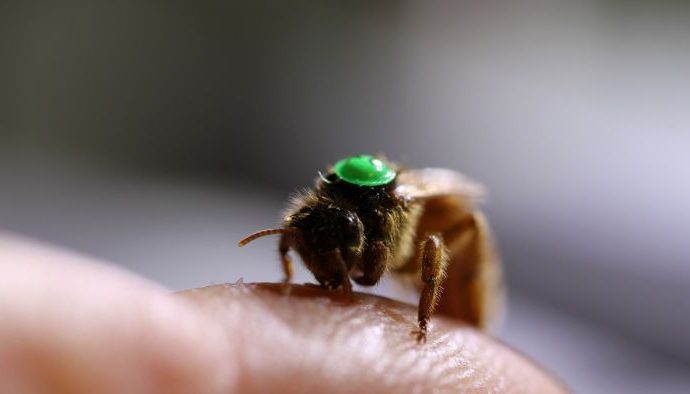A rather delicate artificial insemination procedure may hold the key to saving Australia’s future bee populations from their biggest threat — the varroa mite.
As countries around the world scramble to stop bee populations from disappearing, the Australian bee industry is divided on how to best protect bees from the destructive parasite.
But it involves a controversial question that has split the industry: Should Australia be able to breed up varroa-mite tolerant bee colonies while risking bringing another harmful virus into the country?
Ron Clarke is one of just a handful of bee breeders who uses artificial insemination to breed up colonies in Australia.
It’s delicate work under microscopic conditions, requiring tiny tools and a lot of patience but Mr Clarke is passionate about creating genetically superior bee colonies.
He is particularly interested in breeding up bees that would be tolerant to varroa mite.
The tiny mite is responsible for the collapse of many bee colonies world-wide but it hasn’t arrived in Australia — yet.
Mr Clarke said he could breed varroa-tolerant bees by bringing in bee semen from other countries such as New Zealand.
It appears that Kiwi colonies have already been infected with the pest but have some bees strong enough to live through the invasion.
But bringing bees into Australia from overseas presents a problem.
The imported bee semen that could be used by Mr Clarke to build colonies with varroa tolerance is largely infected by a different threat — the deformed wing virus.
Mr Clarke is pushing the Federal Department of Agriculture and Water Resources to lift the ban on importing deformed wing virus into the country so he can easily use the stock.
Another threat to bees: Deformed wing virus
Deformed wing virus is a disease that, when symptoms are showing, shrinks and deforms the wings on bees.
It is often recognised as the nail in the coffin to bee colonies already infected by varroa mite, however the impact of the virus on its own is much less harmful.
Mr Clarke and his supporters argue that the threat posed by the varroa mite is far greater than the problem of introducing the deformed wing virus into Australia.
“We should be able to get that stock in here and help us to overcome the shock of varroa because we’re going to lose a lot of hives,” he said.
“In every industry you’re going to get your ‘for and against’, but at this point in time until the bee keeper feels it hitting his hip pocket he’s not exactly in tune with what we’re trying to do.”
He said research showed it was also likely that the deformed wing virus would come into Australia with varroa mite, as it is the number one way it is spread.
Biosecurity concerns of importing bee semen
While there’s some industry support for Mr Clarke’s push to build up varroa-tolerant stock, his plans are controversial.
Australian Honey Bee Industry Council executive director Trevor Weatherhead said the risks needed to be carefully considered.
“Our biosecurity is paramount within Australia and we want to shut off all pathways that we can that will bring in something that will affect our industry here in Australia,” he said.
Like most people in the industry, he agreed the introduction of varroa mite into Australia was a matter of “when and not if”.
But he said there was a possibility that Australia could get varroa mite without also getting deformed wing virus, which would be far less destructive.
He said the industry did not want to lose that chance.
Mr Weatherhead said they were also already using their time advantage to look for other ways to lessen the impact of varroa mite in Australia.
A report from the Department of Agriculture and Water Resources in 2008 found that deformed wing virus did not require risk management mainly due to the lack of consequences of its entry in the absence of varroa.
But a spokeswoman for the department said because many people in the industry disagreed they included it as a restriction.
She said they would not change the current requirements unless there was further evidence to show there was no risk to the bee population in introducing this virus.
Source: ABC News




































Leave a Comment
You must be logged in to post a comment.